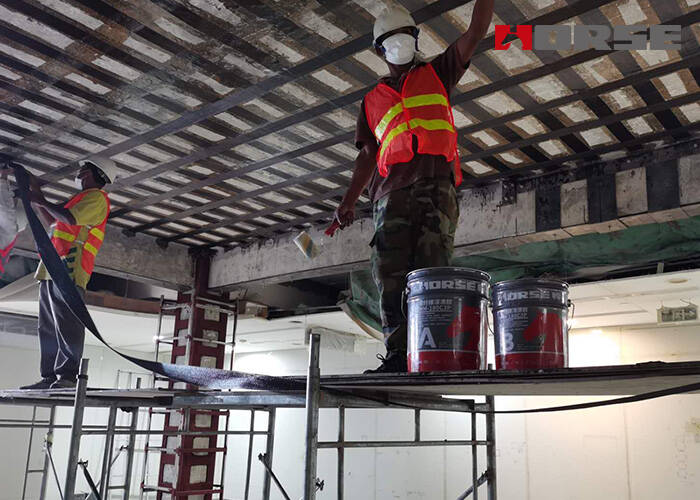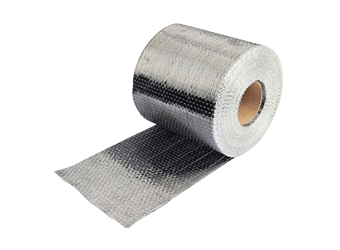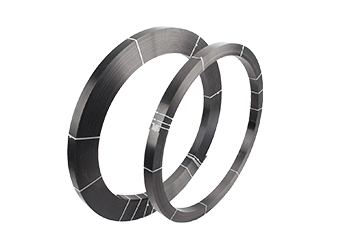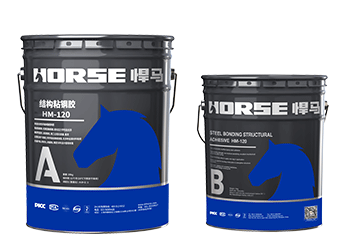โซลูชัน
Horse Construction นำเสนอวัสดุเสริมแรงโครงสร้างแบบครบครันพร้อมการสนับสนุนทางเทคนิค การสนับสนุนเอกสาร การสนับสนุนผลิตภัณฑ์ การสนับสนุนซอฟต์แวร์ การสนับสนุนโครงการ
Adding Load To The Floor Is Acceptable, But Not Without Structural Reinforcement!

What is a load?
Load refers to external forces and other factors that cause internal forces and deformations in a structure or component. Traditionally, it refers to various direct actions exerted on engineering structures or components to produce effects.
Common loads include: structural dead weight, floor live load, roof live load, roof ash load, vehicle load, crane load, equipment dynamic load, and natural loads such as wind, snow, ice, and waves.
Today's main topic is the common floor loads in daily life. The floor load is divided into floor dead load and floor live load, and the unit of floor live load is generally KN/㎡
According to the standard value of floor live load, it is roughly divided into the following seven levels based on personnel and equipment conditions:
(1) 2.0kN/m2: Few people are active;
(2) 2.5kN/m2: There are many active people and equipment available;
(3) 3.0kN/m2: There are many active people and heavy equipment;
(4) 3.5kN/m2: The active people are very concentrated, sometimes crowded or with heavy equipment;
(5) 4.0kN/m2: The activity is quite intense;
(6) 5.0kN/m2: Warehouse for storing items;
(7) 6-7kN/㎡: Equipped with large mechanical equipment.
During the normal use of buildings, due to their relatively fixed functions, there will be almost no overloading, but there are also cases of improper use, addition of floors, renovation, and changes in usage functions. Once there is an increase in load, the components must be reinforced, otherwise the consequences will be unimaginable.
The commonly used methods for insufficient load on the floor include pasting steel plates for reinforcement and pasting carbon fiber cloth for reinforcement.
Paste steel plates for reinforcement
The method of pasting steel plates for reinforcement is fast in construction, with no wet operations or only a small amount of wet operations such as plastering on site. It has little impact on production and daily life, and after reinforcement, it has no significant impact on the appearance and original clearance of the original structure. However, the reinforcement effect largely depends on the bonding process and operational level.

Paste carbon fiber for reinforcement
The carbon fiber cloth reinforcement method not only has the advantages of pasting steel plates, but also has the advantages of corrosion resistance, moisture resistance, almost no increase in structural weight, durability, and low maintenance costs. However, it requires specialized fire prevention treatment and is suitable for various load-bearing concrete structural components and general structures.
คุณสามารถหาได้ทุกสิ่งที่คุณต้องการที่นี่ ไว้วางใจและลองใช้ผลิตภัณฑ์เหล่านี้ คุณจะพบความแตกต่างอย่างมากหลังจากนั้น

คาร์บอนไฟเบอร์ของ Horse Construction เหมาะสำหรับการเสริมแรงโครงสร้าง การซ่อมแซม และปรับปรุงพื้นผิวคอนกรีต ก่ออิฐ เหล็ก และไม้บนอาคาร สะพาน ทางหลวง ทางรถไฟ อุโมงค์ ท่าเทียบเรือ และสนามบินพลเรือน

แถบ/แผ่นลามิเนต/แผ่นโพลีเมอร์เสริมคาร์บอนไฟเบอร์ที่มีความแข็งแรงสูง (CFRP) สำหรับการเสริมความแข็งแรงโครงสร้างและการซ่อมแซมคอนกรีต

กาวยึดติดแผ่นเหล็กโครงสร้าง HM-120 เป็นผลิตภัณฑ์อีพ็อกซีสองส่วนที่มีการยึดเกาะที่แข็งแรง บ่มที่อุณหภูมิห้อง มีคุณสมบัติป้องกันการเสื่อมสภาพ ทนต่อแรงกระแทกได้ดีเยี่ยม ทั้งการยึดติดด้วยตนเองและการยึดติดร่วมกันของเหล็กและคอนกรีต โดยมีอัตราการเฉือนสูง ใช้สำหรั